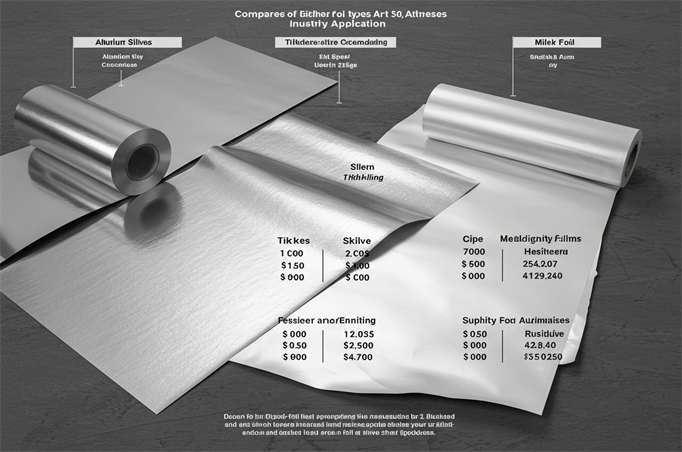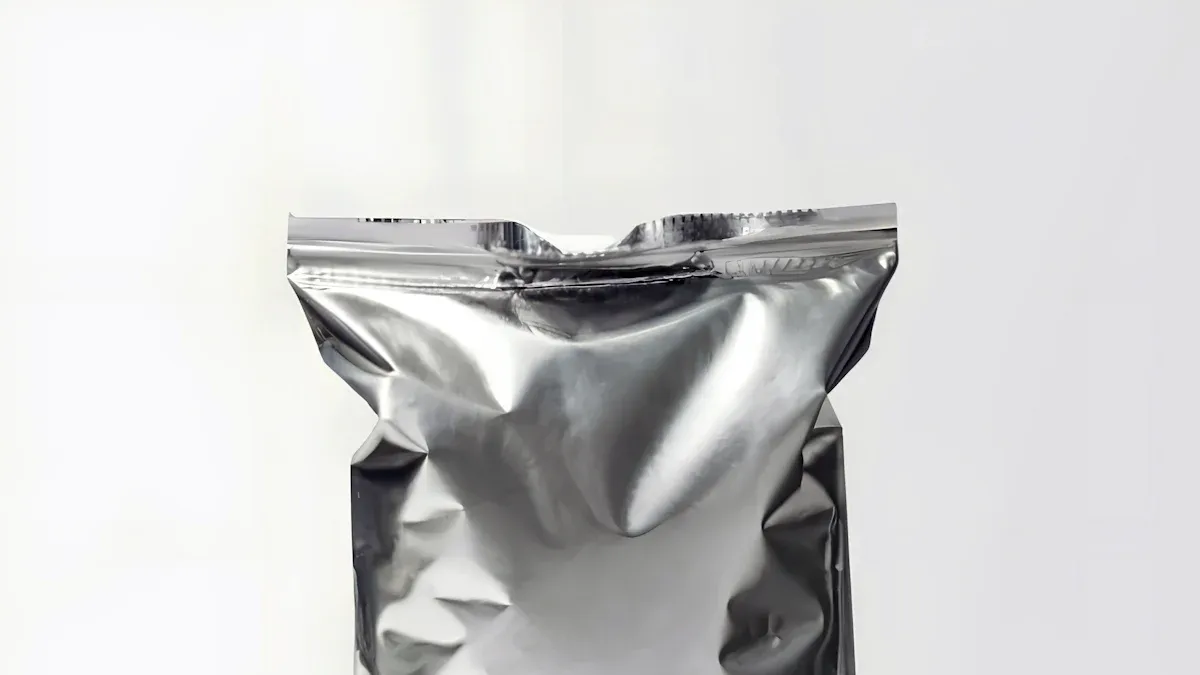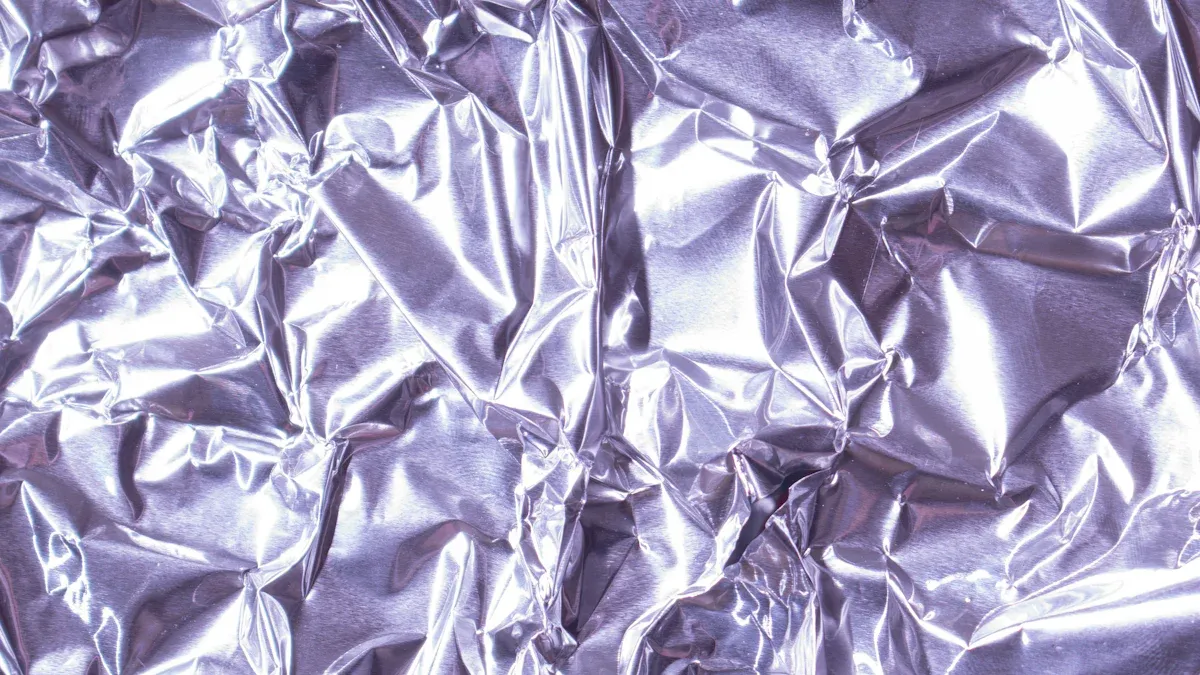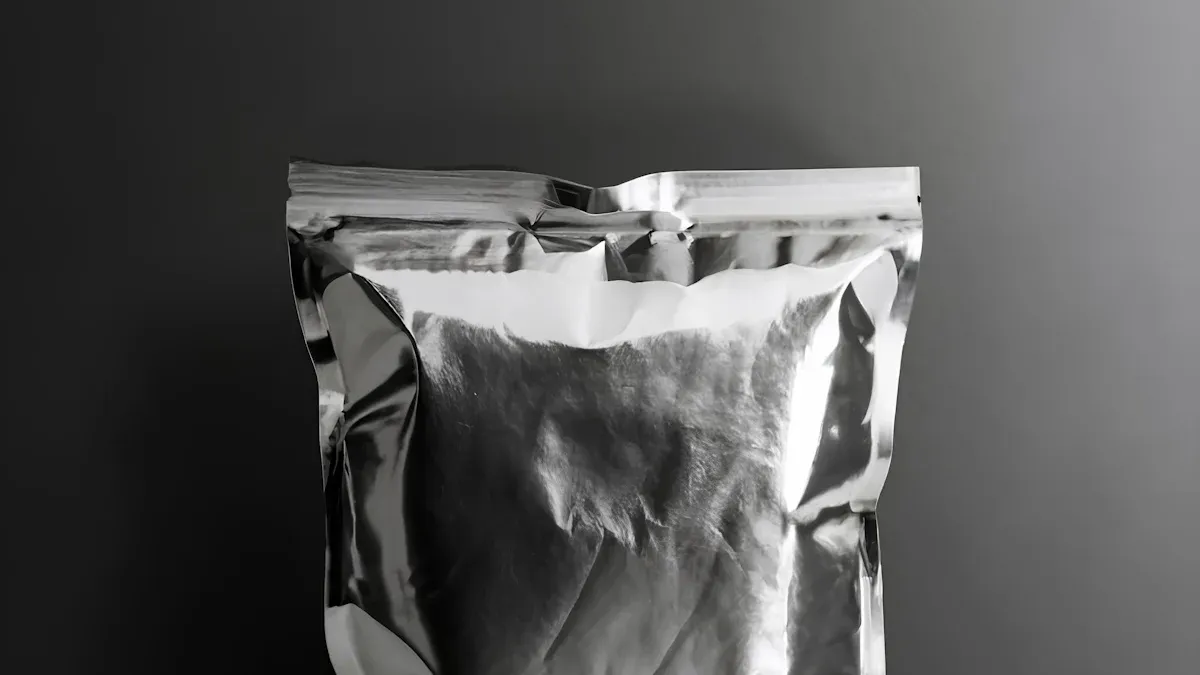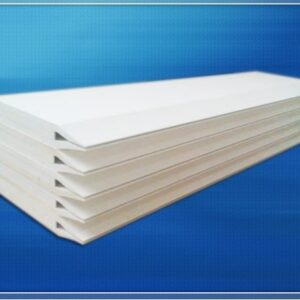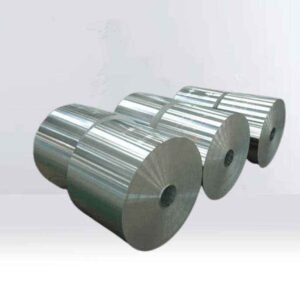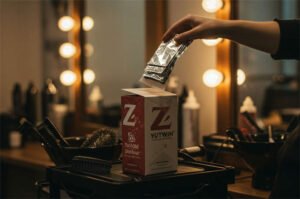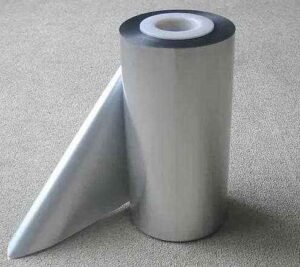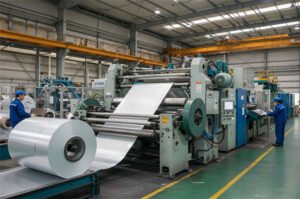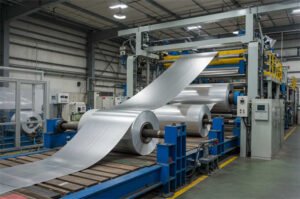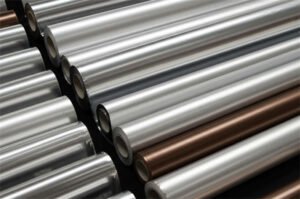Il est important de choisir la bonne feuille d'argent pour chaque projet. L'épaisseur et la pureté modifient l'aspect, le toucher et la durée de vie de la feuille. Une feuille plus fine se plie facilement, tandis qu'une feuille plus épaisse résiste mieux à la déchirure. Une feuille pure brille davantage, mais coûte plus cher. Chaque utilisation (art, emballage ou industrie) nécessite un équilibre entre flexibilité, résistance et prix. Pour prendre une décision rapide, les lecteurs peuvent consulter la liste de contrôle simple ci-dessous.
Principaux enseignements
- Choisissez le type de feuille d'argent adapté à votre projet. Utilisez de l'argent pur pour les œuvres d'art. Utilisez feuille d'argent pour l'emballage et la décoration. Utilisez du papier aluminium imitation pour les travaux manuels et les grands espaces.
- Choisissez le bon épaisseur de la feuille pour vos besoins. Le film ultra-fin est idéal pour les illustrations détaillées. Le film standard convient pour l'équilibre et l'emballage. Le film résistant est solide pour l'industrie et la protection.
- Manipulez le papier d'argent avec précaution. Utilisez des mains propres ou des gants. Conservez le papier d'argent dans un endroit frais et sec. N'utilisez pas de film plastique. Cela permet d'éviter le ternissement et les dommages.
- Utilisez la bonne méthode pour appliquer la feuille. Le marquage à chaud prolonge la durée de vie des emballages. Les méthodes de transfert faciles conviennent aux arts et à l'artisanat.
- Réfléchissez au coût et à la qualité. La feuille d'argent pur coûte cher et est fragile. La feuille plaquée argent est brillante et moins coûteuse. La feuille imitation est bon marché et résistante.
Types de feuilles d'argent
Feuille d'argent pur
Feuille d'argent pur est également appelée feuille d'argent véritable. Elle est composée uniquement d'argent. Cette feuille est très brillante et éclatante. Elle est fine et souple. Les artistes l'utilisent pour les beaux-arts et la restauration d'œuvres anciennes. La feuille d'argent pur peut changer de couleur rapidement. On la scelle rapidement pour qu'elle conserve son bel aspect.
Feuille argentée
Feuille métallique argentée a une base métallique comme le cuivre ou le laiton. Une fine couche d'argent recouvre la base. Les fabricants utilisent la galvanoplastie pour ajouter l'argent. Cette feuille est brillante, mais coûte moins cher que la feuille d'argent pur. La couche d'argent peut s'user avec le temps. Le métal de base peut alors apparaître. La feuille plaquée argent est idéale pour les emballages fantaisie et certaines œuvres d'art.
Feuille d'argent imitation
La feuille d'argent imitation est fabriqué en aluminium. Il ressemble à de l'argent véritable, mais n'est pas aussi brillant. Il a une couleur bleutée. Cette feuille ne change pas de couleur aussi rapidement que la feuille d'argent pur. Les gens l'utilisent pour artisanat, albums et décorations pour la maison. Il est facile à utiliser et peu coûteux. Il couvre de grandes surfaces telles que les murs ou les plafonds.
Composition
| Type | Matériau principal | Apparence | Durabilité |
|---|---|---|---|
| Feuille d'argent pur | 100% Argent | Brillant, blanc, éclatant | Doux, s'oxyde rapidement |
| Feuille argentée | Métal commun + Argent | Finition argentée brillante | La couche peut s'user |
| Feuille d'argent imitation | Aluminium | Plus terne, bleuâtre, moins brillant | Résiste à l'oxydation |
Remarque : la feuille d'argent imitation est choisie pour les projets qui nécessitent un aspect argenté. Elle n'est pas aussi coûteuse ni aussi fragile que l'argent véritable.
Utilisations
| Type | Art Utilisations | Utilisations des emballages | Utilisations dans l'industrie/la décoration intérieure |
|---|---|---|---|
| Feuille d'argent pur | Beaux-arts, dorure, restauration | Rarement utilisé | Rarement utilisé |
| Feuille argentée | Arts décoratifs, presse écrite | Boîtes-cadeaux, cosmétiques, emballages alimentaires | Accessoires de décoration, miroirs |
| Feuille d'argent imitation | Artisanat, albums, décorations murales | Emballage cadeau, emballage décoratif | Revêtement mural/plafond, décoration |
- La feuille d'argent imitation est idéale pour les loisirs créatifs tels que les bijoux en résine, le nail art et les objets faits main.
- La feuille argentée rend les cartes de visite et les certificats brillants.
- La feuille d'argent pure est idéale pour restaurer des œuvres d'art anciennes et réaliser des projets sophistiqués.
Tip: Aluminum paste is not the same as silver foil. Aluminum paste is thick and gray. It is used in paints and coatings. It does not shine or come in sheets. People use aluminum paste for industry, not for decoration or packaging.
Silver Foil Thickness
Ultra-Thin
Ultra-thin silver foil measures between 4.0 and 8.0 microns. Artists often choose this type for delicate work. The foil feels almost weightless and tears easily. It covers fine details on frames, sculptures, and paintings. Ultra-thin foil creates a smooth, shiny surface. This type is best for projects that need a soft touch and high detail. Dragon Foils and similar brands offer ultra-thin foils that transfer well and show sharp lines. These foils work well for high-detail art because they stick to small shapes and curves.
Standard
Standard silver foil ranges from 0.001 to 0.002 inches (0.025 to 0.05 mm) thick. This thickness gives a balance of flexibility and strength. Standard foil bends without breaking but does not tear as easily as ultra-thin foil. Packaging companies use standard foil for luxury boxes and gift wrap. Artists use it for larger surfaces or when they need more durability. Standard foil also appears in decorative print media and some home decor. It holds up well during handling and keeps its shine.
Heavy-Duty
Heavy-duty silver foil measures up to 0.005 inches (0.127 mm) or more. This type feels stiff and strong. Factories use heavy-duty foil for industrial needs, such as insulation or shielding. It protects against heat, moisture, and light. Heavy-duty foil does not bend as easily, so it works best for flat or simple shapes. Some pharmaceutical packaging uses thick foil to keep products safe. Heavy-duty foil lasts longer and resists damage.
Physical Properties
The thickness of silver foil changes its physical properties. Thinner foil feels soft and flexible. It wraps around small objects and fills tiny spaces. Thicker foil feels firm and holds its shape. It resists tearing and protects what it covers. The shine and color can also change with thickness. Ultra-thin foil looks the brightest and smoothest. Thicker foil may look less shiny but offers more strength.
Remarque : Thinner foils are best for fine details and smooth finishes. Thicker foils are better for strength and protection.
Adéquation
Choosing the right thickness depends on the project:
- Artists pick ultra-thin silver foil for detailed work, like gilding and restoration.
- Standard foil fits both art and packaging. It covers larger areas and stays strong.
- Heavy-duty foil suits industry and packaging that need extra protection.
Customization helps meet special needs. Companies can order silver foil in custom sizes and thicknesses. For example, luxury packaging often uses 0.001-inch foil in 12 x 12-inch sheets. Pharmaceutical companies may need 0.002-inch foil in smaller sizes. Laminated foils and jumbo rolls can be made to fit any product or machine.
| Type d'application | Typical Thickness | Typical Size(s) | Customization Options |
|---|---|---|---|
| Silver Foil (Luxury Packaging) | 0.001 inches (0.025 mm) | 12 x 12 inches (304.8 x 304.8 mm) | Custom sizes and thicknesses available |
| Aluminium Blister Foil (Pharmaceutical) | 0.002 inches (0.05 mm) | 4 x 6 inches (101.6 x 152.4 mm) | Tailored thickness and sizes for product needs |
| Pharma Foils (Pharmaceutical) | 0.02 inches (0.5 mm) | 4 x 4 inches, 6 x 6 inches (various) | Custom sizes to meet strict pharma standards |
| Laminated Foil | Varies (multi-layered) | Varies based on product and application | Custom sizes and thicknesses for strength and barrier properties |
| Aluminium Foil Jumbo Rolls | Roll width: 24 inches (609.6 mm) | Roll length: 1000 meters | Industrial scale customization for mass production |
- Paper thickness for silver foil packaging ranges from 12 pt to 24 pt. This helps protect items during shipping.
- Materials like kraft paper, SBS cardboard, and e-flute corrugated can be paired with foil for different needs.
- Customization lets brands choose the right look, feel, and strength for their products.
Tip: In art and decor, artists can pick the thickness and finish of silver foil to match the texture and shine they want. This makes each project unique.
Application Recommendations
Art & Craft
Artists and crafters can pick from many silver foil types. Each kind and thickness gives a different look. Thin foils are best for small, detailed designs. Thick foils are stronger for things people touch a lot. Some special foils, like holographic, brushed, patterned, and matte, make cool finishes.
| Silver Foil Type | Description | Best Use & Thickness |
|---|---|---|
| Standard Silver Foil | Classic, mirror-like finish | General crafts; thin for detail, thick for durability |
| Holographic Silver Foil | Rainbow patterns, eye-catching | Decorative accents; similar thickness to standard |
| Brushed Silver Foil | Textured, subtle shine | Sophisticated crafts; thickness varies |
| Patterned Silver Foil | Pre-made designs (checkerboard, geometric) | Decorative projects; thickness varies |
| Matte Silver Foil | Less shiny, soft look | Elegant crafts; thickness varies |
Silver leaf is very thin and breaks easily. Artists use it for fine art and fixing old pieces. Silver foil, usually made from aluminum, is easier to use and lasts longer. It is good for DIY and school projects.
DIY Silver Foiling Steps:
- Get your design ready with foil adhesive or double-sided tape.
- Put adhesive only where you want the foil.
- Wait for the adhesive to dry as told.
- Place foil shiny side up and press with a tool.
- Peel off the foil to see your design.
- Brush away extra foil with a soft brush.
Tip: Try ribbon leaf or transfer foil for easy use and smooth results.
Emballage
People who design packaging use silver foil to make things look fancy. Standard and thick foils help protect boxes and keep them nice. Holographic and patterned foils add style to gift boxes and luxury items. Matte and brushed foils give a modern, fancy look.
| Silver Foil Type | Effect | Durability & Application Notes | Cost Notes |
|---|---|---|---|
| Standard Silver Foil | Bright, shiny finish | Thicker foils last longer; used for frequent handling | Hot foil stamping is most durable |
| Holographic Silver Foil | Rainbow shine | Similar to standard; adds visual interest | Cost-effective options available |
| Brushed Silver Foil | Textured, modern look | Durable when thick; good for luxury packaging | |
| Patterned Silver Foil | Decorative patterns | Thicker foils resist wear | |
| Matte Silver Foil | Subtle, less reflective | Durable with thickness; for high-end packaging |
Application Methods:
- Hot foil stamping sticks the foil on best and lasts longest.
- Cold foil works for lots of boxes and costs less.
- Digital foil transfer is good for small batches and custom jobs.
Remarque : Aluminum foil is strong, bends easily, and keeps out water and heat. It is easy to recycle and does not change food taste. Tin foil is weaker and harder to recycle.
Industry
Factories use silver foil for many jobs. Heavy-duty foil keeps out heat, water, and light. Hot stamped foil works on plastic, wood, metal, and fabric. It costs less than chrome plating and lets you change designs fast.
Key Pros:
- Works on lots of materials.
- Makes detailed designs and many finishes.
- Needs less special tools.
- Good for the environment.
- Fast to set up and clean up.
Key Cons:
- Not as tough as chrome plating.
- Scratches and changes color more easily.
- Does not handle heat well.
- Needs careful prep for best results.
Tip: Heavy-duty silver foil is best for insulation, blocking things, and big packages.
Pros and Cons
| Type de feuille | Durabilité | Tarnishing | Sealing Needed | Handling Ease | Meilleure utilisation |
|---|---|---|---|---|---|
| Silver foil | Moyen | Oui | Oui | Easy with ribbon/transfer | Indoor crafts, packaging |
| Imitation silver leaf | Lower | Non | Non | Easy | Budget crafts, decor |
| Heavy-duty silver foil | Haut | Non | Non | Stiff, less flexible | Industrial, insulation |
- Silver foil gives a bright, mirror-like look. It makes crafts and packages stand out.
- It needs sealing to stop tarnish, mostly for art and indoor decor.
- Imitation silver foil is cheaper and does not tarnish, but it is less shiny.
- Heavy-duty foil lasts longer but is harder to bend.
Note: Silver foil does not work well with high heat. It is best for decoration, packaging, and inside use.
Cost and Practical Tips
Price Points
The price of feuille d'argent changes with type and thickness. Feuille d'argent pur is the most expensive. It uses real silver and needs special care. Feuille métallique argentée is cheaper. It has a thin silver layer on another metal. Imitation silver foil is made from aluminum. It is the cheapest and good for crafts and big batches. Thicker foils last longer but cost more. Thin foils are better for small, careful work and cost less.
| Type of Foil | Thickness/Size | Price Range (USD) | Application/Notes |
|---|---|---|---|
| Pure Silver Foil (999) | Small sheets (~100mm x 100mm) | $21.78 – $30.95 | Fine art, lampworking, restoration; fragile, requires special handling |
| Silver-plated Foil | Silver-backed copper tape (1/2″ width, 9 ft length) | ~$5.00 | Moderate durability, used in craft and decorative applications |
| Feuille d'argent imitation | Ultra-thin silver-colored foil for nail art and resin art | ~$5.21 | Budget-friendly, mass production, nail art, resin crafts |
Thicker foil is stronger but costs more money.
Sourcing
People should pick feuille d'argent that fits their project. For short or indoor use, silver paper labels are cheap and work well. Silver film labels last longer and keep out water. Silver foil labels look fancy and are used for special products. Good companies to buy from are Aldon Corporation, The Welding Warehouse, and Umicore Technical Materials. These companies sell good foil and follow the rules.
Best sourcing practices:
- Pick the right material for your project.
- Choose a printing method that fits your design and amount.
- Test samples for color, strength, and stickiness.
- Try to use recyclable materials and water-based inks.
- Keep foil in cool, dry places away from the sun.
Handling
Handle feuille d'argent carefully to keep it nice. Always use clean hands or gloves so you do not leave marks. Store foil in special cloth bags or boxes with protection strips. Do not use plastic wrap or rubber bands because they can cause tarnish. Clean foil gently with mild soap and a soft brush. Never use strong chemicals or rough pads.
- Keep foil in cool, dry places.
- Use anti-tarnish strips when storing.
- Clean foil after it touches food or salt.
- Dry foil right away after washing.
Cleaning and careful storage stop tarnish and damage.
Sécurité
Using feuille d'argent safely is important, especially in factories. Workers should not make dust or breathe in dust or fumes. Always wear safety glasses, gloves, and protective clothes. Make sure the air is fresh and clean. Keep foil away from acids, halogens, and sulfur. If foil spills, sweep it up and do not let it get outside. Being around silver compounds for a long time can change skin color, but pure silver is mostly safe.
Keeping things clean and wearing protection helps workers stay safe with feuille d'argent.
Quick Reference
Art Choices
| Silver Foil Product | Best For | Caractéristiques | Sheet Size |
|---|---|---|---|
| iCraft Gliding Foil | Resin art, cards, jewelry, decor | Thin, easy to use, metallic effect, long-lasting | 6 x 6 inches |
| Silver Metallic Laminating Toner Foil | Laminating, foiling projects | 100% user rating, many colors/patterns, resists fading | Divers |
| Standard Silver Foil (Aluminum) | School projects, crafts | Budget-friendly, covers large areas, easy to handle | Divers |
- Artists pick thin foil for small details. Thicker foil is better if you want it to last longer. iCraft Gliding Foil is easy for everyone to use. You can use silver foil on paper, wood, and furniture.
Note: Aluminum paste cannot take the place of silver foil in art. Aluminum paste is for paints and coatings, not for shiny sheets.
Packaging Choices
| Silver Foil Type | Application | Principaux avantages |
|---|---|---|
| Silver Polyester Laser Labels | Modern, weatherproof packaging | Durable, sleek, resists moisture |
| Silver BOPP Foil | Custom-printed packaging | Reflective, allows unique metallic effects |
| Standard Silver Foil | Gift boxes, luxury packaging | Mirror-like shine, enhances product appeal |
- Silver foil labels make boxes and bottles look shiny. Weatherproof labels keep packages safe from water and sun. Laminates help protect packages that get touched a lot.
Tip: Put one sheet at a time in the printer. This stops smears.
Industry Choices
| Silver Foil Type | Best Use Cases | Features and Recommendations |
|---|---|---|
| Hot Foil Stamping Foil | Industrial labeling, branding | Permanent bond, high durability, works on many surfaces |
| Heavy-Duty Silver Foil | Insulation, shielding | Stiff, resists heat and moisture, long-lasting |
| Specialty Finishes | Luxury goods, high-contrast designs | Holographic, brushed, or matte for custom looks |
- Hot foil stamping makes the toughest and longest-lasting finish. Silver foil stands out best on dark things. Coatings help foil last longer when things get rough.
Note: Aluminum paste does not work for industrial foiling. It is used for paints and coatings in factories.
Picking silver foil depends on what you need. Pure silver foil is best for art and fixing old things. Silver-plated foil is good for packaging and decoration. Imitation silver foil works for crafts and big areas. Thickness, purity, and price matter a lot. The table below shows how these things change your choice:
| Facteur | Impact on Selection |
|---|---|
| Épaisseur | Goes from 0.01mm to 6mm; thick foil is strong for factories, thin foil is better for art. |
| Purity | More purity (99.99%+) makes foil shinier and tougher, which is good for special jobs. |
| Coût | Goes up with more purity and thickness; custom shapes can help save money. |
Try not to make these mistakes:
- Picking the wrong foil for where you use it
- Forgetting about water protection
- Not noticing how the foil looks
- Not testing or cleaning surfaces first
Readers can check the quick guide for easy choices. If you have special needs, ask an expert or read more to get the best results.
FAQ
What is the difference between pure silver foil and imitation silver foil?
Pure silver foil contains only silver. It shines brighter and costs more. Imitation silver foil uses aluminum. It looks similar but has a bluish tint and resists tarnish. Imitation foil works well for crafts and large projects.
Can silver foil be used for food packaging?
Yes, silver foil can wrap food. Most food packaging uses aluminum foil because it is safe, strong, and keeps food fresh. Pure silver foil is rare in food packaging due to its high cost.
How does aluminum paste compare to silver foil?
Aluminum paste is a thick, gray material for paints and coatings. Silver foil is a thin, shiny sheet for art, packaging, or industry. Aluminum paste cannot replace silver foil in decorative or protective uses.
Does silver foil tarnish over time?
Silver foil can tarnish when exposed to air, moisture, or chemicals. Sealing the foil helps prevent tarnish. Imitation silver foil made from aluminum does not tarnish as quickly.
What is the best way to store silver foil?
Store silver foil in a cool, dry place. Use anti-tarnish strips and soft cloth bags or boxes. Avoid plastic wrap and rubber bands. Clean hands or gloves help prevent fingerprints and stains.

